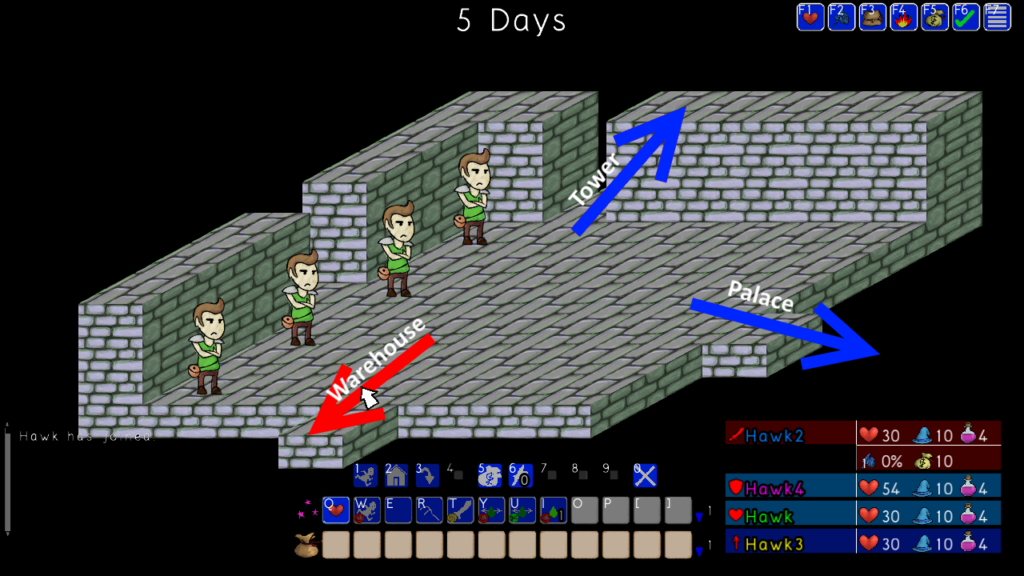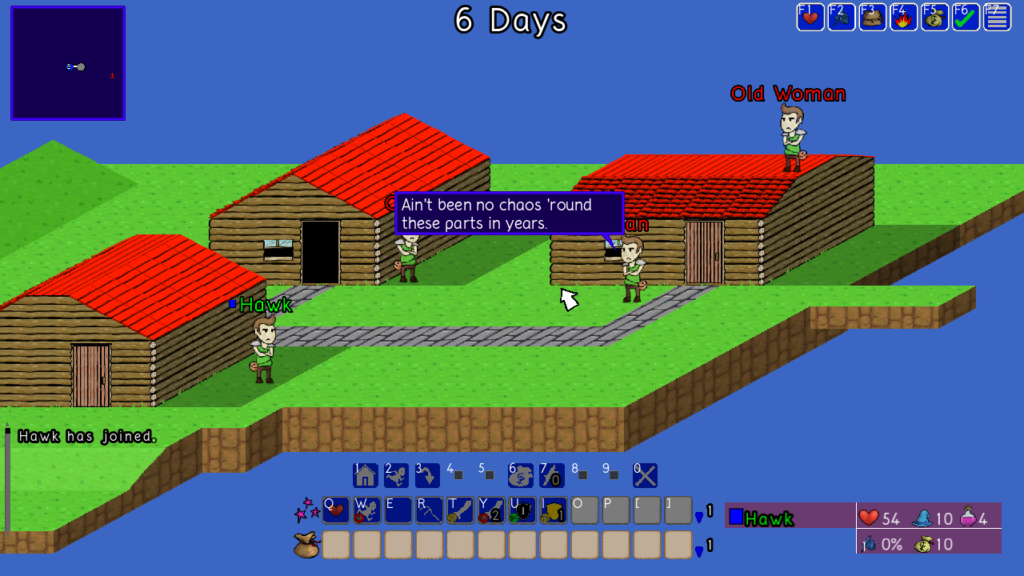Introduction to Rooms
Since I haven’t been posting regularly, I’ll do a quick catch up on the biggest change to the game. After the success of the previous test having a more traditional co-op format, it became clear that the old board game style map view no longer fit the game. A lot of alternate approaches were considered such as just making each node on the board game map its own much bigger space space and stitching them together as one huge map. But that would generate a great deal of artist work (transitioning between areas), and our map engine was struggling to deal with large maps and I didn’t want to take any more time to optimize it. So we came upon a much more efficient solution: the room system.

The basic idea was that we’d move the overworld into a simple minimap, and make the battle display a permanent fixture even when outside of combat. As such, every space on the old game board became its own room. From there it became obvious that we could fill rooms with objects with various interactions- talking, opening, etc. This added a lot of missing context from the previous builds where it was often unclear who was talking or where the treasure just came from.

The end result is far more suitable to the more traditional RPG format that the game has mutated into, letting players explore and interact with an actual world.
Changes
- Map style shifted from linear sequence of events with optional sequences on a zoomed out overworld to freely moving between connected rooms.
- Objects in rooms are interactive with specific actions related to them (use, break, unlock, talk, etc), and NPCs can move around in patterns.
- Text boxes now stem from their speaker’s sprite.
- Basic cutscene support with NPCs moving around and animating in response to events.
- Created a new scenario involving a haunted castle.
- Various usability improvements (a more prominent turn indicator, shifted UI elements around, etc).
- Various balance improvements.
- Built an entire tile map editor (unimportant to players, but a required time-consuming step due to the system shift)
Test Results
Due to tester availability, testing wasn’t as extensive this go around- using fewer groups and only progressing part way through the scenario in some cases. As such data is pretty limited: people seemed to like the new map system, some old UI failures still haunt us, some UI improvements worked perfectly (players rarely fail to notice it was their turn now). It kind of doesn’t even matter. It’s painfully obvious this is the correct direction even without external validation, we just need to keep going.
Next
There’s one major feature left on the table: simultaneous turns (along with several larger features like saving/options). It’s tempting to get the last of these system-level tasks out of the way first, but in the interest of laying the foundation for graphics production (and giving myself a break from system code) I am instead moving on to content production and furthering our mechanics along. Update 11 likely just looks like a new scenario or two, a larger plan for the story as a whole, improving how our classes play, cleaning up status effects, giving a final pass on how our stats look, etc. A real hodgepodge of finalizing things to make content production smoother.
It’s terrifying to be committed to a system (what if people don’t like it?), but also relieving that we’re finally moving on.